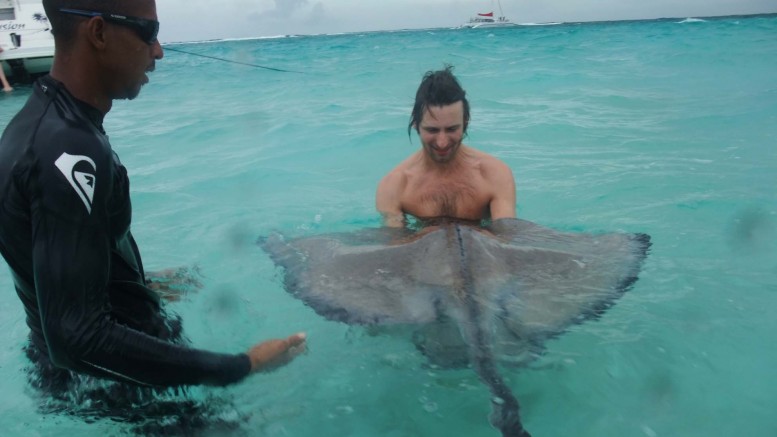STINGRAYS have a fearsome reputation, especially after the death of Steve Irwin, so jumping into waist-deep water with dozens of these giant fish writhing around your ankles might seem like madness.
But at Stingray City in Grand Cayman they couldn’t have been more gentle. Tourists head out to this shallow sand bar every day for a close encounter with these denizens of the deep.
Initially I was sceptical over the ethics of cavorting with such wild animals, but I was soon enchanted. After all, this was not a zoo as they were free to swim off whenever they wanted.
Lured here in a bygone days by the cast-offs strewn by fisherman cleaning their catch, the rays return to be fed by strictly regulated visiting boats.
Crouching down with outstretched arms I enticed one into an embrace. Its rubbery wings massaged my chest as I gazed into its otherworldly eyes, I even went in for a kiss which is said to give you seven-days’ luck.
This has to rank among the most extraordinary wildlife experience I have ever encountered, but it was only scraping the surface of all that these islands have to offer.
If palm trees, white sandy beaches and balmy, crystal-clear seas are your ideal paradise, then the Cayman Islands might be just what you are looking for. Lying about 270 miles north-east of Jamaica three small islands make up this UK overseas territory, which is best known as a tax haven for the wealthy. However, its natural treasures are far richer. The nation is also a haven for exotic sea birds and rich marine life that provides bountiful, delicious food for the islanders.
I was based at Seven Mile Beach on Grand Cayman, the largest of the islands at about 25 miles long and about 8 miles wide. The resort is on the island’s bustling west coast where the brilliant white sand was awash with families basking on sun loungers after a dip in the warm, calm waters.
All-inclusive hotels are restricted, so there about 200 restaurants within easy reach to tempt you with their take on catch of the day and other seafood specialities. The sea and its inhabitants are integral to the islanders’ everyday lives.
When Columbus discovered these lands he named them the Las Tortugas, the Spanish for turtles, after seeing so many in the surrounding waters. Sir Francis Drake renamed them Las Caymanas, the Carib for alligators, after perhaps mistaking the resident iguanas for their larger relatives.
Click here to see more pictures from my trip.

Be the first to comment on "Treasures of the Cayman Islands"